Join Us!
To stay up-to date on the latest Art Terms news,artworks, artists and exclusive offers. Sign up now
[SHOWS] HYEMIN LEE: A Thousand Water Drops @LEE EUGEAN GALLERY
AUGUST 16TH, 2019
HYEMIN LEE'S Solo Exhibition: 'A Thousand Water Drops'
이유진갤러리 ㅣ LEE EUGEAN GALLERY, Seoul
2019. 08. 13 (TUE) - 09. 02 (MON)
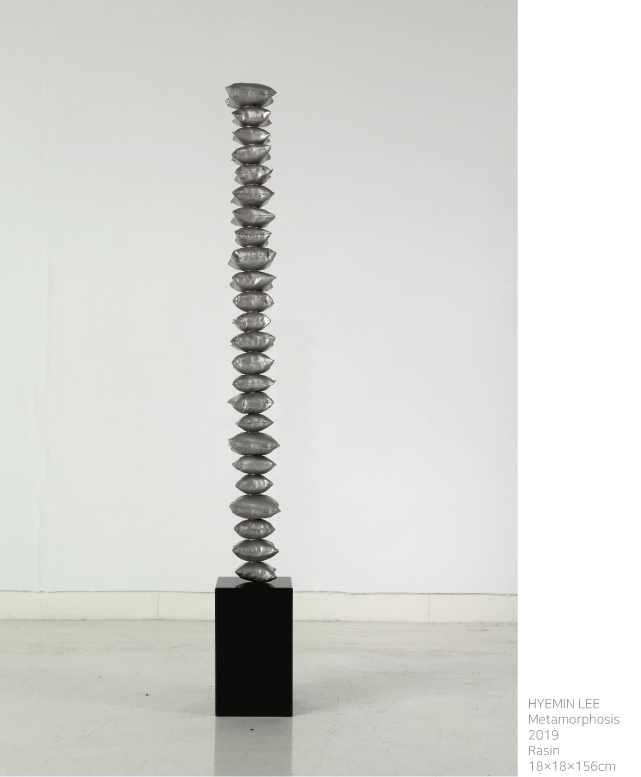
From tear-drenched pillow to gateway to peace, or
Potential of art cultivating the heart’s miracle
Sim Sang-Yong (Art history PhD, Art critic)
1.
Hyemin Lee’s world points to a fundamental place in art, a profound place of existence where our minds stir and emotions waver, a place that has long been disregarded. This is the world that has been viewed as overly “psychological, subjective and suspicious” through the bias of avant-garde scientism. Yes. The symbols, marks, orthography and sentences that compose this world are not irrelevant to the nights the author has spent drenching her pillow with tears.
Aesthetics has an interesting character related to the awareness of beauty in that it is inherently linked to experiences of desperation or agony. To borrow Howard Guinness’s appropriate expression, the stemming of “one process from one crisis” is an undisputed order of life. The moment one becomes aware of the complete helplessness that forbids intervention by one’s will, the gateway towards beauty opens. This may be paradoxical, but not untrue. It is a “spiritual truth” that the moment the will is disallowed from intervening is the moment towards eternity, or a “moment of Utopia.” It is also a process of human enhancement and a process towards understanding freedom and liberation.
Actualization of beauty finally becomes art after facing the absurdity of life and enduring times of agony, as it is impossible to reach the essence of life without experiencing the pain of existence. Only tempered life permits one to reach its “unique profundity.” This is the reason why while life is afforded to everyone, not every life accomplishes the same thing. We may heed Os Guinness’s words on this topic:
“When comfort and convenience deplete our energy and idealism, idleness permeates our minds like poison in our blood. Consequently, lethargy, ennui and futility take over our mind and we slowly submit to the temptation to subordinate our ideals.”
However, let us be on guard against the empty rhetoric of romanticism. Without a cure, tears cease to be beautiful! If Lee had not embarked on the road to recovery and instead dwelt on painful memories, her story would have remained distant from the warmth of life, even if the tear-drenched pillows were exquisitely colored. Instead, when plastered bandage, used for wrapping wounds and thus symbolizing the weakness of existence, transforms into pure white lace for the bride, this world becomes a platform of aesthetic sublimation that speaks for the once-forgotten elasticity of life. Surprisingly, plastered bandage doesn’t bring back the fractured memories endured by the artist, due to her skill of extracting consolation and purification of the mind from the poverty of discarded fabric and tear-drenched pillows.
As such, Lee modifies memories and renews meaning through commonplace materials, simple tailoring and earnest sewing, as if reiterating Reinhold Niebuhr’s prayer: “Help me accept adversity as the path to peace.” This is the metamorphosis that the artist speaks of, the modification of meaning towards purification. This is not something that can only happen through meditation in a monastery. Though it may lack the momentary analgesic effect of placebo or self-hypnosis, art has a potential for cure and recovery. To this end, we must ponder upon the steps Lee took, starting with her life that features her wounded heart and willingly passing by a painful place in her memory.
2.
Lee’s pillow is a symbolic place which explicitly shows that life is filled with a paradoxical mystery that converts a tearful past to a gateway to peace. As shown in her works entitled “Pillows,” dozens of pillows composed of small pastel-toned fabrics eventually bloom into a single flower. The cultivation of a heart’s miracle has taken place inside of this “memory repository of textiles.” Cheap and commonplace materials are rapidly and fully elevated to a warm and animated existence. Such transformation, a salvation of matter and sublimation of heart, is truly a Kairos-like and fiercely aesthetic incident. This aesthetic proclaims that “there is no such thing as a trivial moment in everyday life.” The basis of this aesthetic is the possibility of solving the mystery of life and witnessing its furtive clues even during its struggles.
Like Raymond Williams’s saying that “culture is a whole way of life,” art also shares the same basis. Though art should not be assimilated or reduced to everyday life, art that entirely surpasses or is unrelated to life is neither art nor meaningful. As expressed by Aimé Fernand Césaire, art without connection to “writing books or building houses, the way we dress, the way we carry our heads, the way we walk” is futile. From the context of Kairos, the mysterious potential of salvation is embedded in all corners of life. As moments of truth flash during the most banal circumstances, people will discover and recover themselves through small moments of their lives within this aesthetic.
This reasoning is the most prominent way of overcoming the dogma of modern aesthetic that dominated the past century. The path pursued by the dogmatism of modern aesthetic resulted in the burial of the contemporary. Within the denial of past and future, only the present was defined as a period worthy of concentration. However, such contemporaneity is only a sequential flow of Kronos’s time, which has resulted in the separation from Kairos’s time, “a time full of opportunity, a moment conceived with eternal meaning and potential.”
It is always a spectacle to see how a “warm rebellion” spreads through the alignment of Lee’s pillows, cut and reborn into five colors, hovering the floor and rising vertically, flowing through space and crossing it horizontally, transforming a cold and neutral white cube into the redemptive space of Kairos. It is especially so when the five-colored and pastel-toned pillows that harbor remembered tears and finally attained peace seem to delightfully create a new path through the barren art of a heartless era.

ARTWORKS
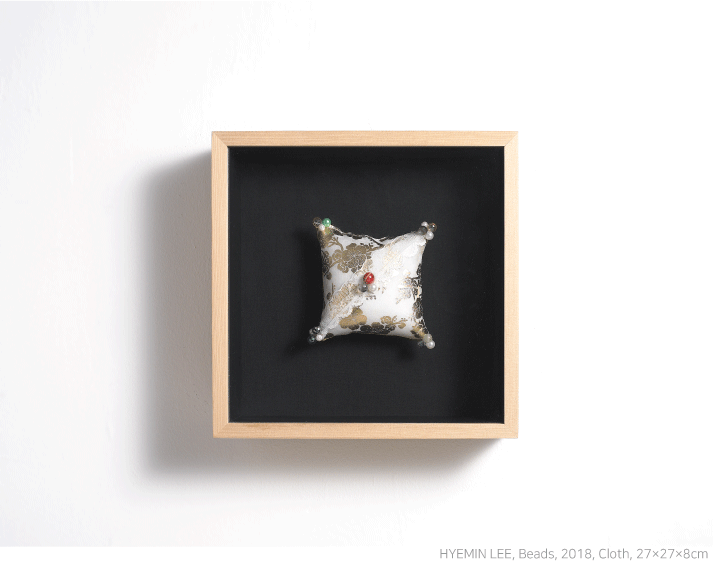
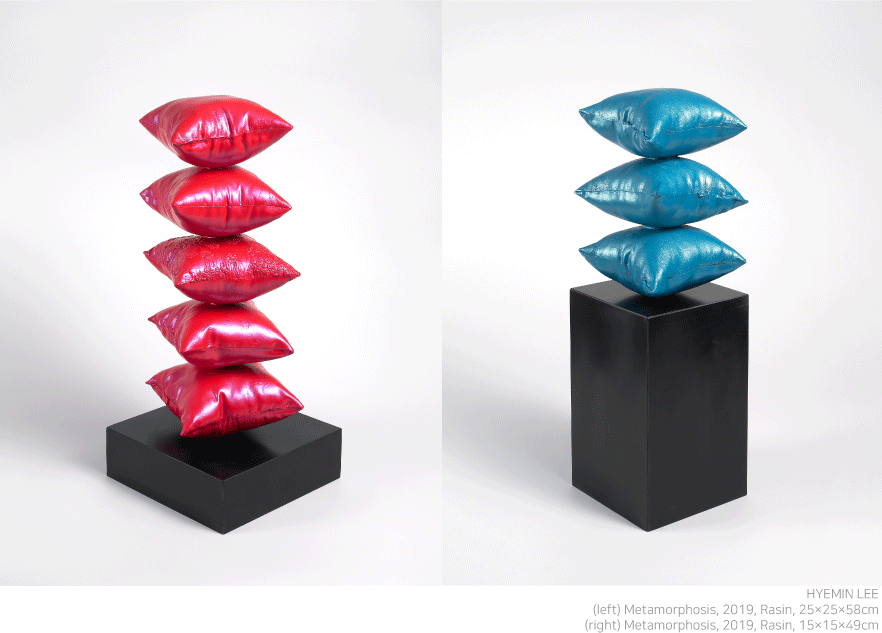
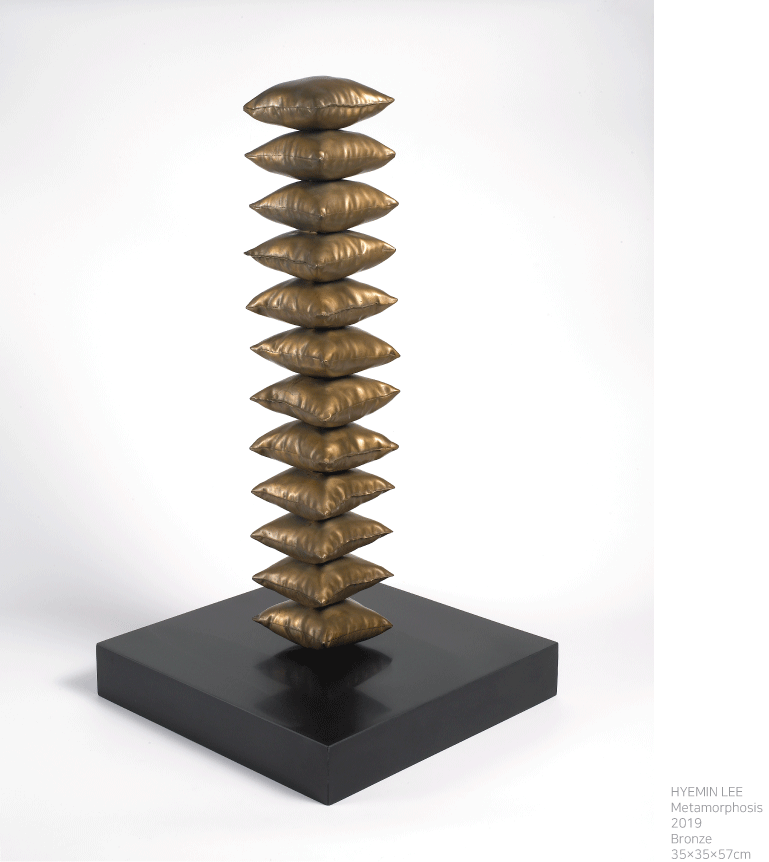
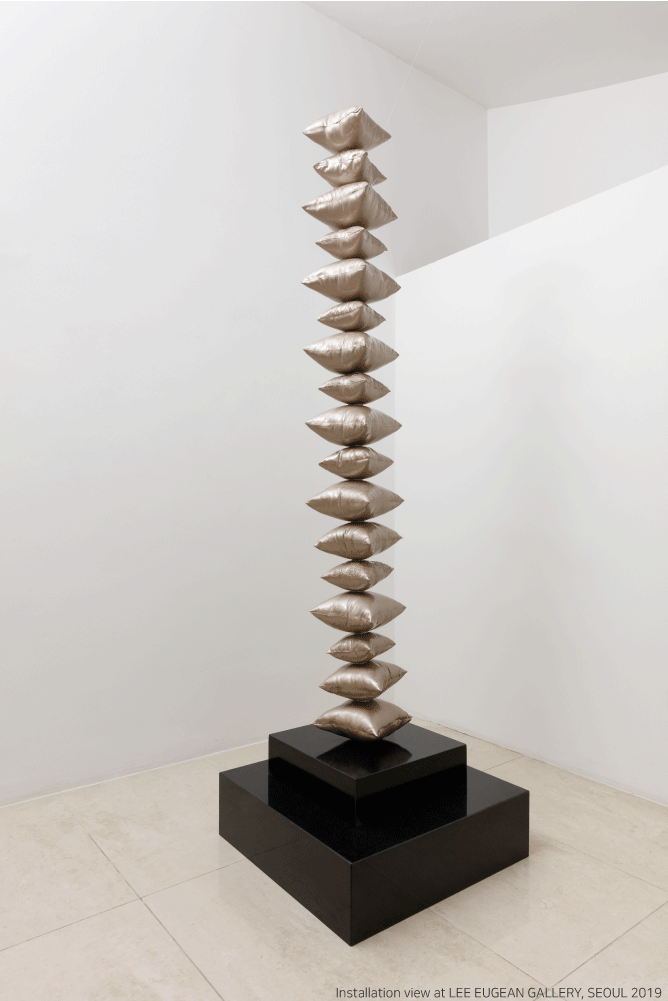
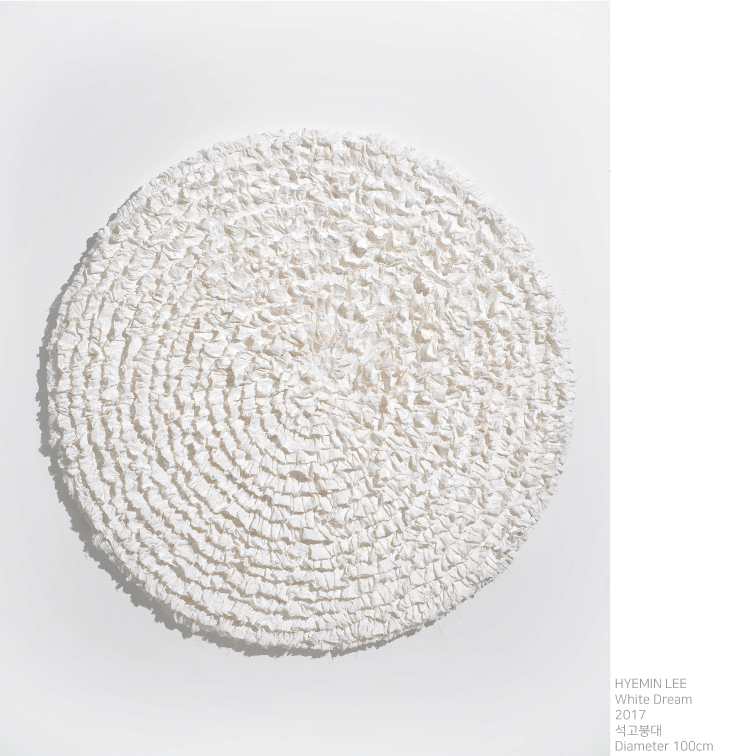
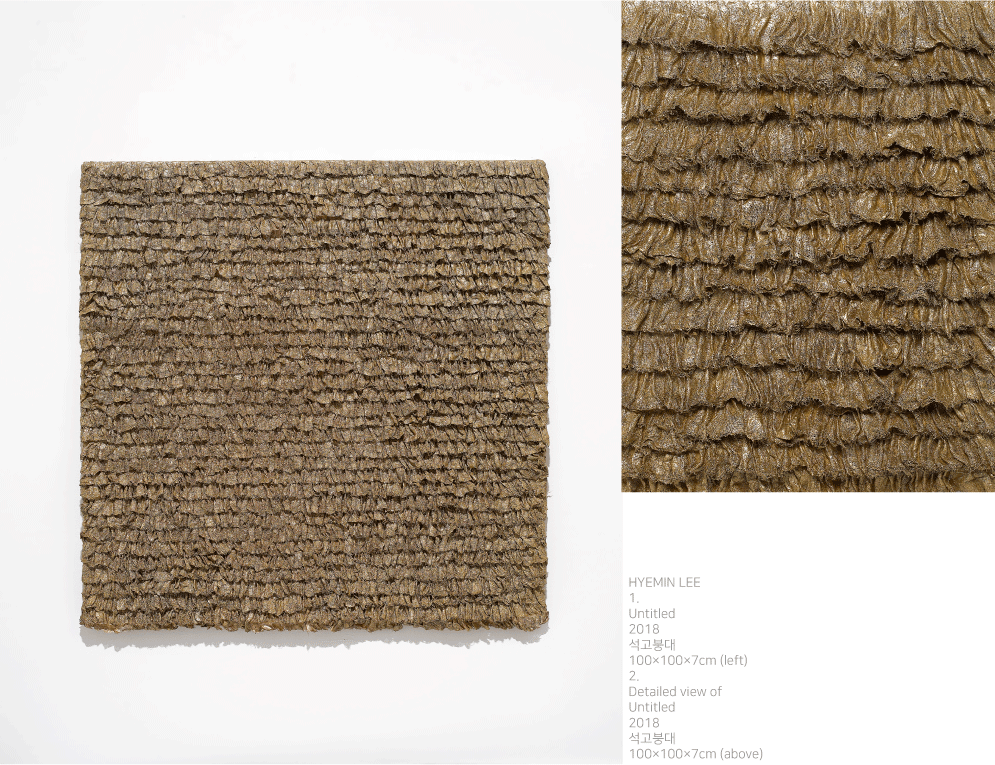

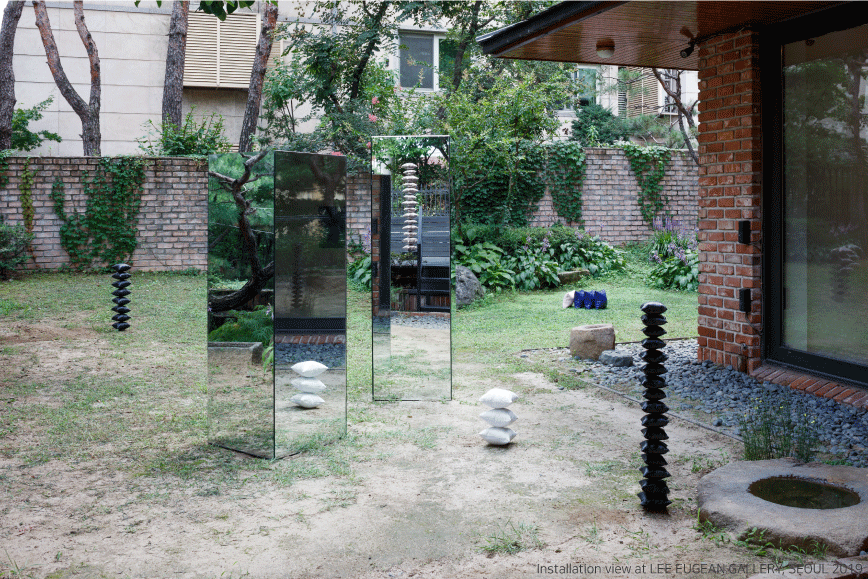
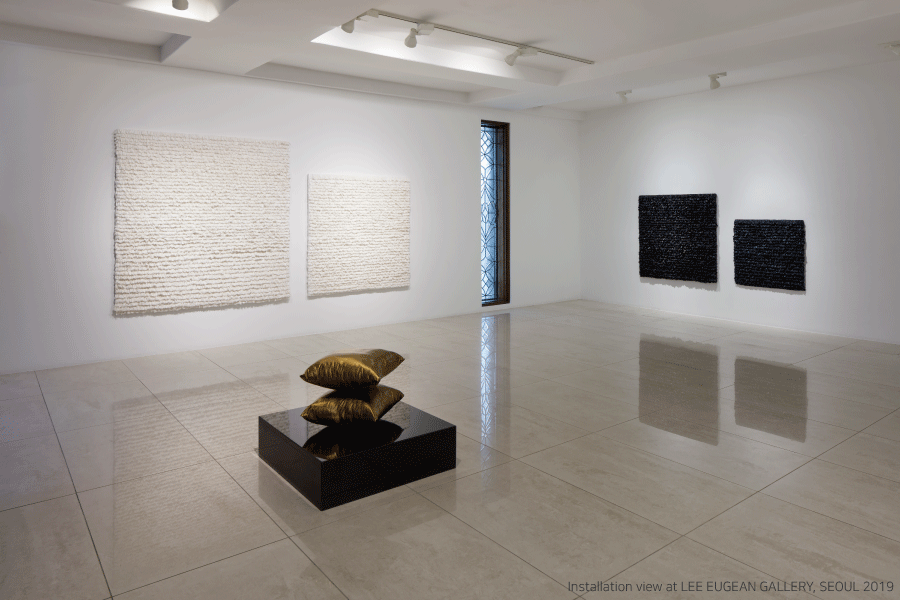
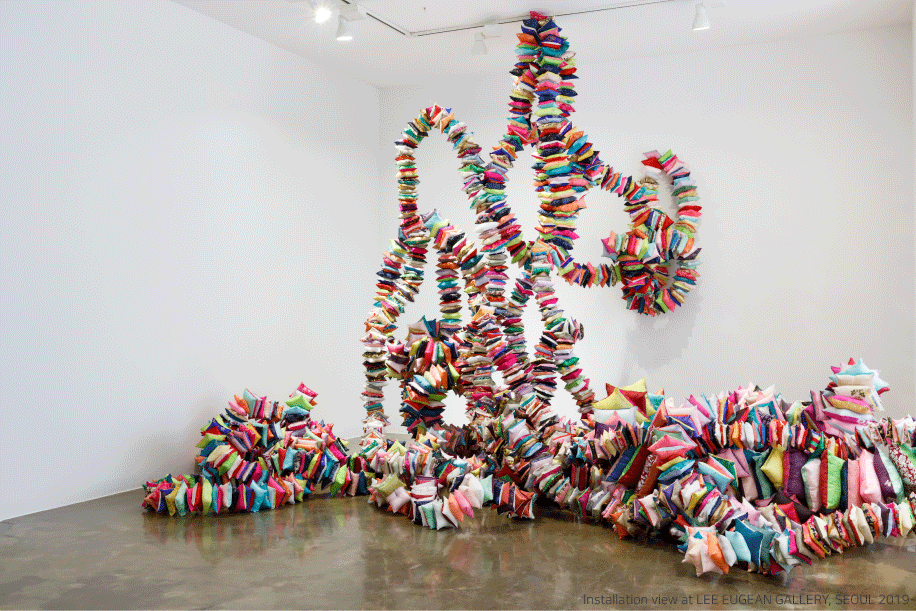
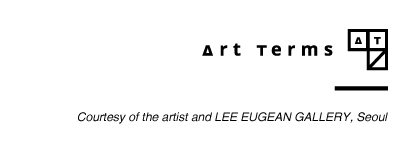
| Prev | [SHOWS] 비문증_그룹전 @ PLACEMAK YEONHUI |
|---|---|
| Next | [Art Fair] ART ASIA 2019 |
| List |